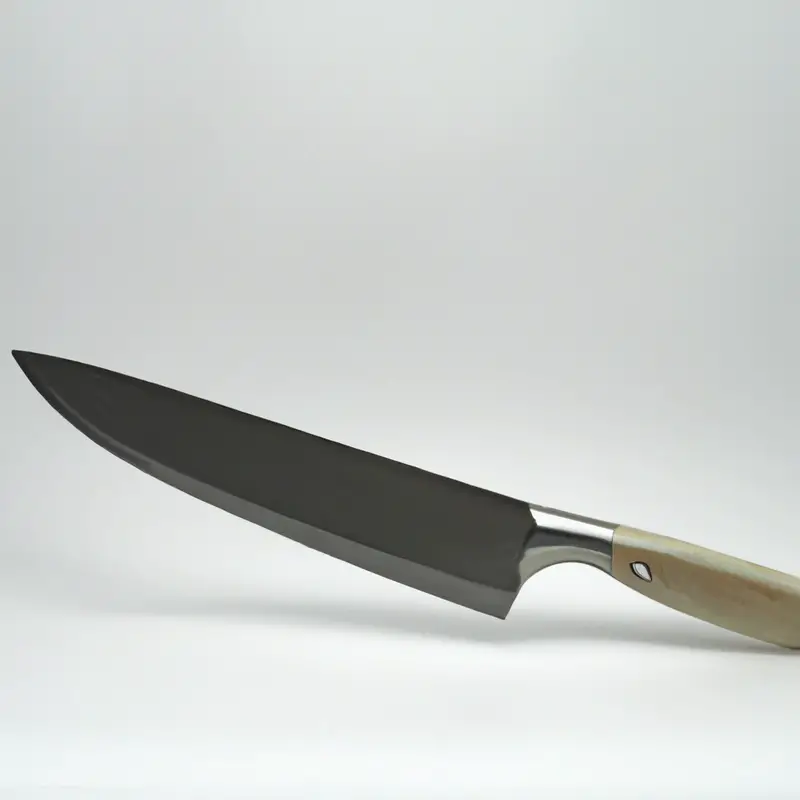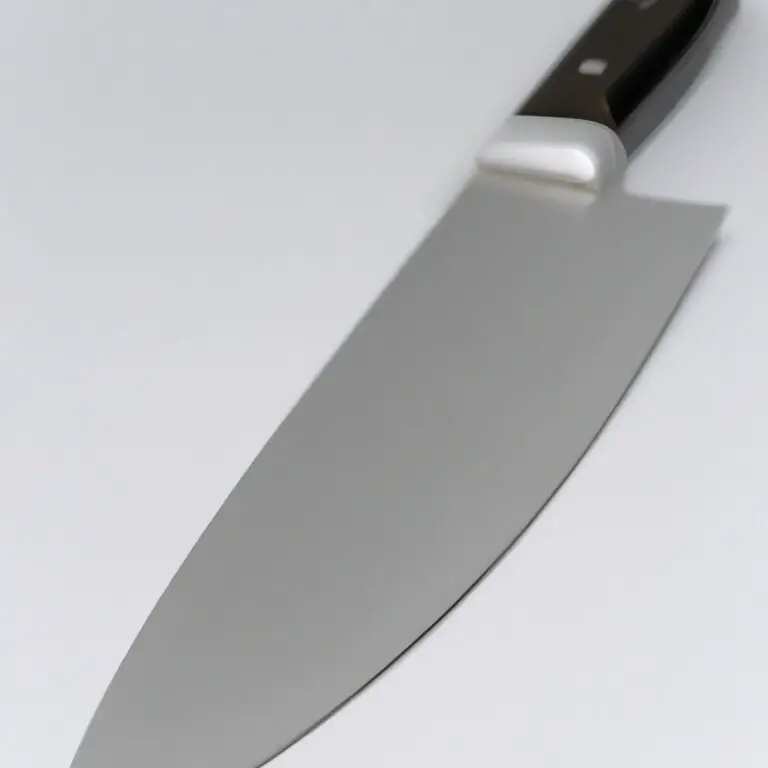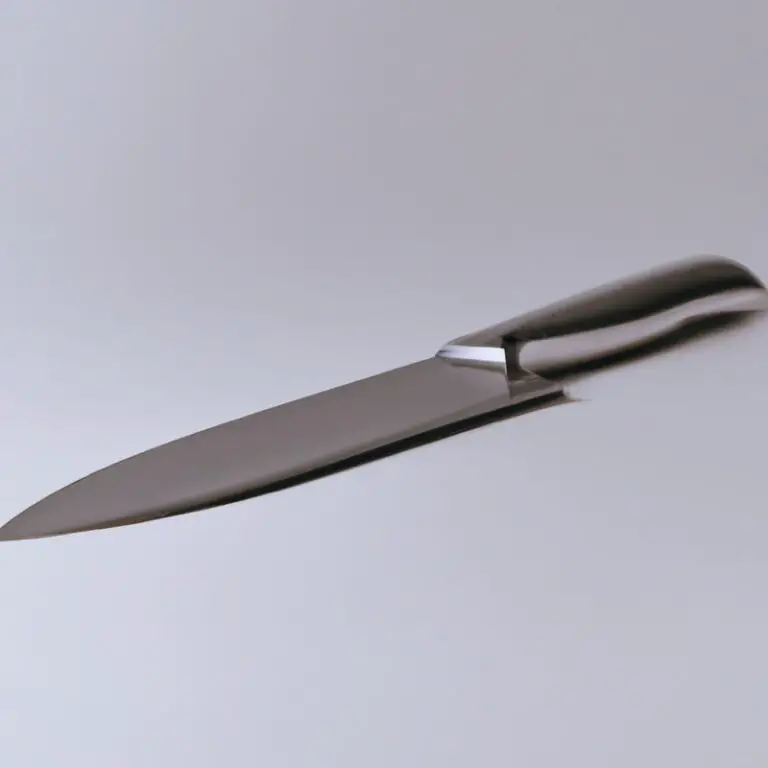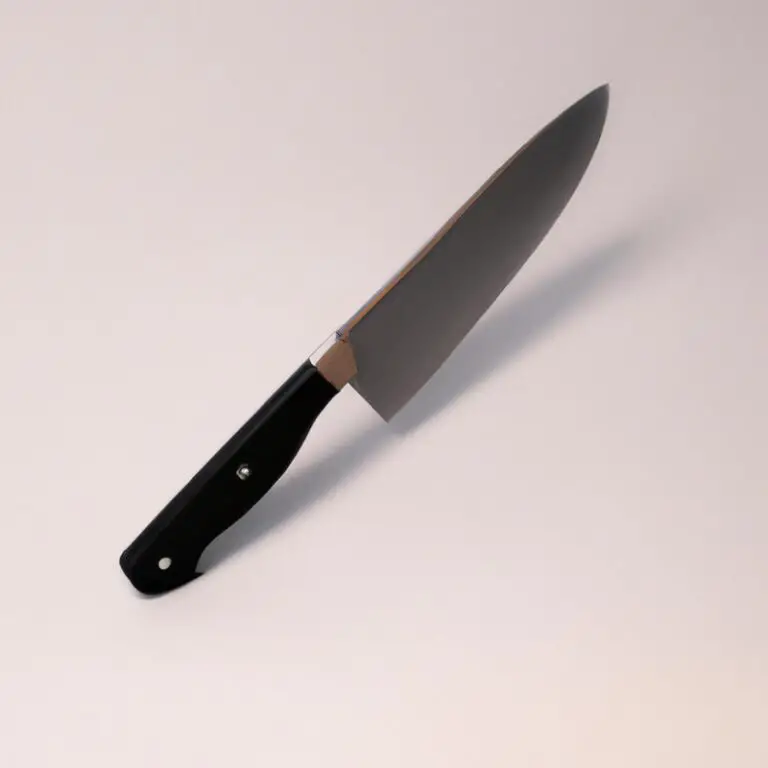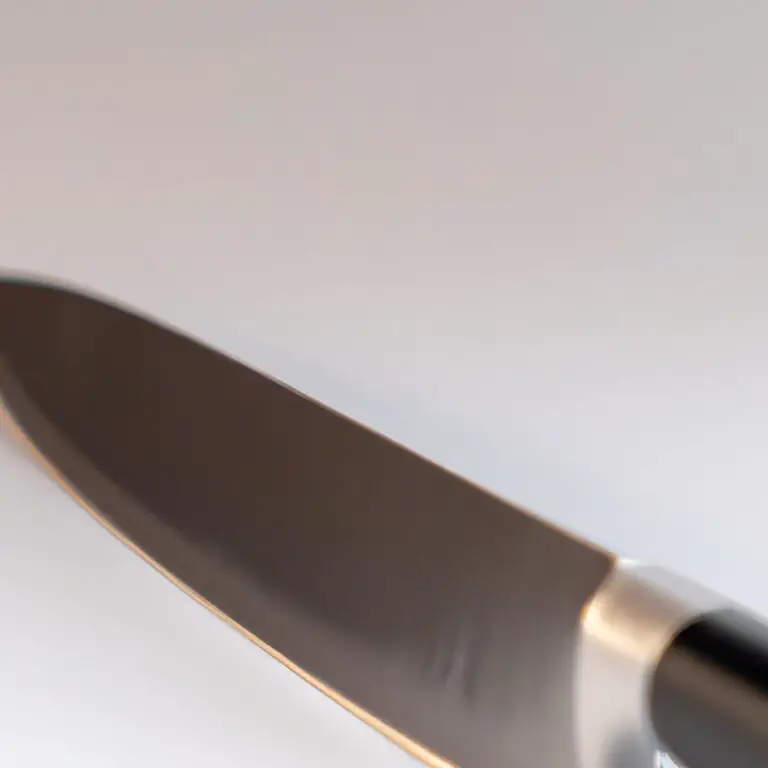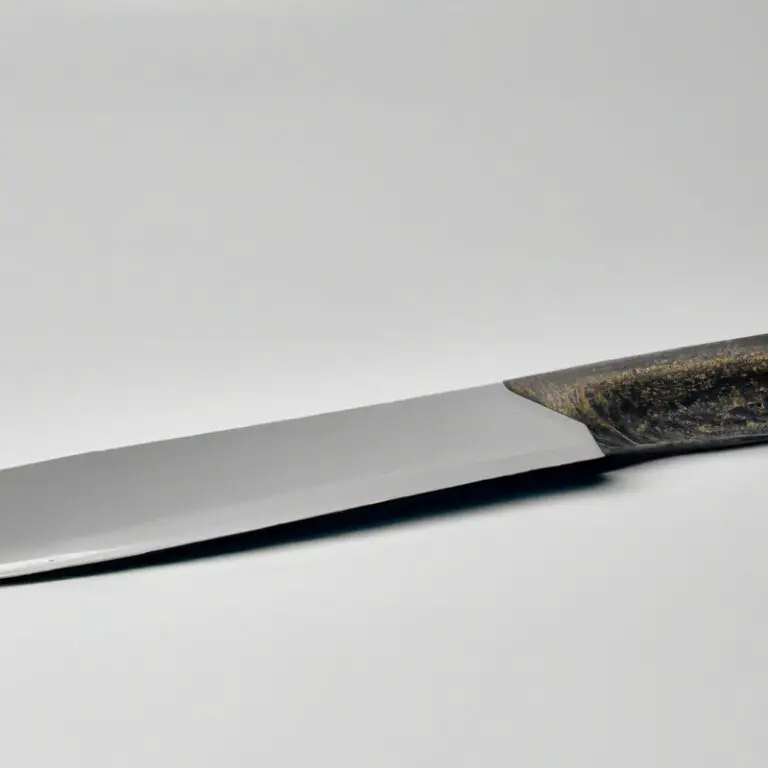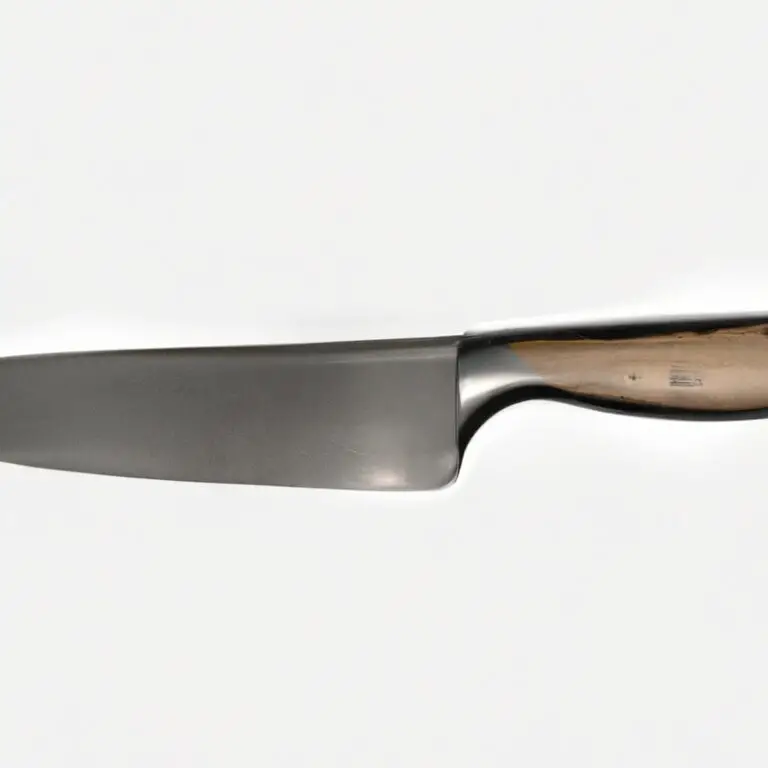How To Prevent a Chef Knife From Slipping While In Use?
Key Takeaways:
- A properly sharpened chef knife is less likely to slip while in use.
- Use a secure grip on the handle and blade to prevent slipping.
- Consider purchasing knives with non-slip handles or blade indentations.
- Use a cutting board with a non-slip surface to prevent slips and make cutting easier.
Have you ever experienced your chef knife slipping during a cut? It’s a common problem that can cause serious injuries.
But don’t worry, I’m here to share with you some tips on how to prevent it from happening.
From choosing the right handle material to maintaining a sharp edge and proper body mechanics, I’ll cover everything you need to know to ensure better knife control. Plus, I’ll give you some insights on how moisture, oil, and weight can impact your grip, and how to use a honing rod to maintain your blade’s alignment.
So, let’s get started and make your cutting experience a safe one!
| Prevention Method | Description |
|---|---|
| Hold the Knife Correctly | Make sure your grip is firm with your thumb on the spine of the knife and your fingers wrapped around the handle of the knife |
| Use a Cutting Board with Non-Slip Surface | Avoid using slippery or unstable surfaces like a glass or steel cutting board that can cause the knife to slip |
| Sharpen the Knife Regularly | A dull knife can cause slipping, as you have to apply greater force to cut. Sharpen the knife regularly to keep the blade sharp and reduce slipping |
| Use a Knife with a Good Handle Design | Choose a knife with a comfortable handle that is easy to grip and reduces hand fatigue. Avoid knives with slippery handles that can cause the knife to slip while in use |
| Dry Hands and Knife Before Use | Ensure your hands and knife are dry before using them in the kitchen. This will help you maintain better grip and reduce slipping incidents |
Choosing the right knife handle material for better grip
The knife handle material plays a crucial role in providing a comfortable and secure grip. The handle material must be durable, moisture-resistant, and have a non-slip texture.
Materials like rubber, plastic polymer, and G10 fiberglass composite are popular choices due to their excellent grip and durability.
Wooden handles with a good texture and finish can also provide a comfortable grip. However, avoid wooden handles that are prone to swelling or warping from moisture.
Ultimately, the handle material should fit comfortably in the hand to prevent fatigue and ensure proper control over the knife.
Blade geometry and its impact on preventing slip-ups
Blade geometry plays a crucial role in preventing slip-ups while using a chef knife. The shape and grind of the blade impact how the knife interacts with food and surfaces.
A wider blade angle provides more stability and control, while a more acute angle allows for precision cutting but requires a steady hand.
The curvature of the blade, known as the “belly,” also affects how the knife performs, with a larger belly providing more rocking motion for chopping and mincing. It is important to consider the intended use of the knife and the user’s skill level when selecting a blade geometry.
A well-designed blade with the appropriate geometry can help prevent slip-ups and provide a safer and more efficient cutting experience.
Importance of maintaining a sharp knife edge
Maintaining a sharp knife edge is crucial for preventing slippage while using a chef knife. A dull blade requires more force to cut, making it easy to lose control and slip.
This not only increases the risk of injury but also leads to uneven cuts and reduces the knife’s efficiency.
A sharp knife edge, on the other hand, cuts through food smoothly and precisely, reducing the need for excessive force and minimizing the risk of slipping. Therefore, it’s important to regularly sharpen and maintain the blade to maintain its sharpness for safe and effective use.
The role of finger placement in preventing slippage
Proper finger placement is crucial in preventing a chef knife from slipping while in use. For maximum control, grip the handle firmly with your dominant hand and place your index finger along the spine of the blade, while curling the rest of your fingers around the handle.
This grip provides stability and precision, allowing you to guide the knife’s movements more accurately.
Another important aspect of finger placement is to avoid letting your fingers touch the blade. Keep your fingers curled away from the blade’s edge to prevent accidental cuts or slips.
It is also essential to maintain a consistent grip throughout your cutting motion, keeping your fingers in the same position throughout.
This prevents slippage caused by unexpected movements or loosening of the grip. Practice proper finger placement and gripping techniques to ensure more controlled and safer use of your chef knife.
Proper body mechanics and positioning for better knife control
Proper body mechanics and positioning are essential for better knife control and preventing slippage. It is advisable to stand straight with your back straight, feet shoulder-width apart, and knees slightly bent.
This posture ensures balance and stability while cutting.
When holding the knife, ensure that your grip is firm but not too tight. Keep your fingers away from the blade’s edge and grip the handle with your thumb and index finger.
Position your other fingers around the handle for support.
Next, position the blade perpendicular to the cutting board, and the handles should be slightly tilted downwards. This angle enhances precision and control while cutting.
While cutting, ensure that your shoulder, elbow and wrist are aligned in a straight line.
Avoid bending your wrist or elbow, as this can cause loss of control or injuries. Use your whole arm to move the knife back and forth while keeping your other hand on top of the item you’re cutting for safety.
Proper body mechanics and positioning are crucial for efficient and safe cutting, preventing slippage or accidents.
Follow these guidelines to achieve better knife control and enhance your cutting skills.
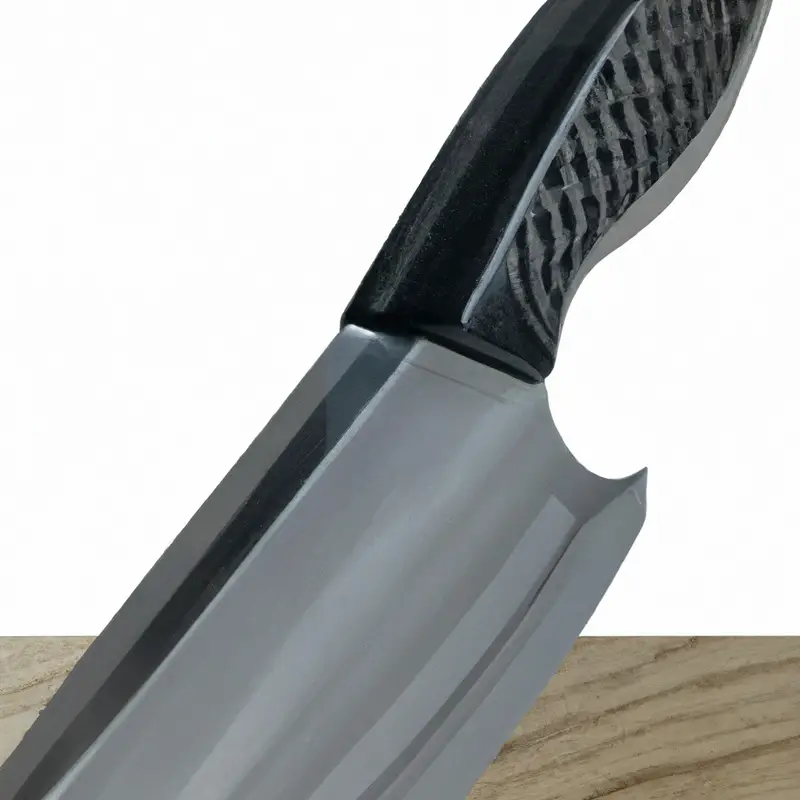
Using a honing rod to maintain edge alignment
Using a honing rod regularly is an effective technique to maintain the edge alignment of a chef knife. The hone’s steel rod helps realign the knife’s edge and straighten any microscopic folds or bumps that may have formed over time.
This straightening process prevents the knife from slipping and makes it more efficient during use.
To use a honing rod, hold it steadily on a surface and angle the blade’s base on top of the steel rod. Keep the knife at about a 20-degree angle and stroke it downwards, using light pressure from the base to the tip, about 5-10 times on both sides of the blade.
Always remember to clean the knife and honing rod after use and store them in a dry place.
It is advisable to hone a knife regularly before it becomes dull to avoid extensive sharpening work.
Considering knife weight and balance for better handling
Knife weight and balance are important factors to consider for better handling and preventing slippage while using a chef’s knife. A properly balanced knife ensures that the blade, handle, and tang have equal weight distribution, providing better control and reducing the risk of slipping.
The weight of a knife also affects hand fatigue during extended periods of use.
A knife that is too heavy may cause strain, while a knife that is too light may lack the necessary momentum for efficient cutting. Chefs should consider the balance of a knife before purchasing and compare various brands and models.
Knives with a full tang and a handle with a comfortable weight ensure a balanced knife for better handling.
Weight distribution can vary depending on the style, size, and brand of the knife. It is essential to find the knife that feels comfortable in the hand and has a balance point at the thumb and index finger for maximum control.
In terms of knife weight, there is no universal ideal weight for a chef’s knife.
It is purely subjective and depends on personal preference and the job at hand. A heavier knife may be suitable for cutting through thick meats and vegetables, while a lighter knife may be useful for slicing and dicing small fruits and herbs.
Choosing a knife with proper weight and balance can significantly improve precision, speed, and safety while reducing hand fatigue and the risk of injury.
Chefs should always test and consider different knives before purchasing to find the one that best suits their needs.
The benefits of using a non-slip cutting board
Using a non-slip cutting board can significantly reduce the risk of accidents while cutting food. Here are some benefits of using a non-slip cutting board:
- Safety: A non-slip cutting board provides a stable surface for cutting food, preventing the board from moving or sliding during use. This feature minimizes the risk of accidental cuts and injuries in the kitchen.
- Durability: Non-slip cutting boards are typically made of high-quality materials that are resistant to cut marks, cracks, and scratches, ensuring long-lasting use.
- Hygiene: Non-slip cutting boards are typically made of non-porous materials that don’t absorb liquids or bacteria. This feature makes them easy to clean and more hygienic than other types of cutting boards.
- Convenience: A non-slip cutting board saves time and effort by ensuring that food stays in place while cutting. This feature allows for faster and more efficient food preparation, making cooking less of a hassle.
By investing in a non-slip cutting board, you are not only prioritizing your safety in the kitchen but also ensuring that you have a durable, hygienic, and convenient cutting surface for all your food preparation needs.
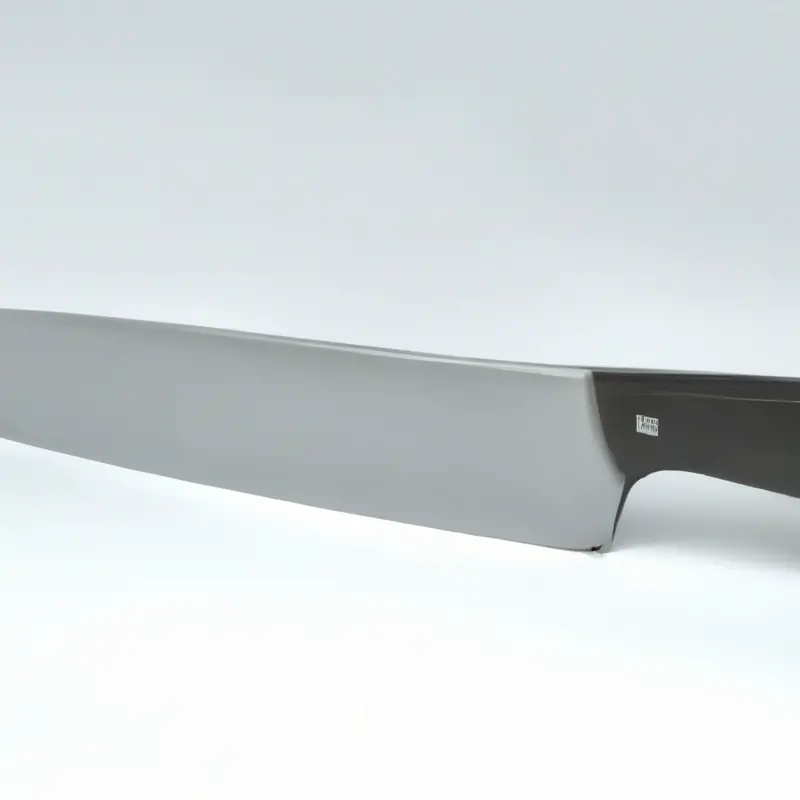
Impact of moisture and oil on knife handle and blade grip
Moisture and oil can have a significant impact on the grip of your knife handle and blade. When working with wet or oily ingredients, the handle can become slippery, making it difficult to maintain control over the blade.
Moisture can cause wooden handles to swell, creating a softer grip that can reduce the knife’s overall control.
It can also cause rust and corrosion in the blade, leading to a dull edge that slips easily. Oil can also make the handle slippery, but it can also damage the finish and affect the grip of synthetic handles.
It can also cause the blade to become slippery and less effective at cutting.
To prevent slippage caused by moisture and oil, it’s important to keep your knife dry and clean throughout use. Wipe the blade and handle often with a dry cloth or towel to remove any excess moisture or oil.
Additionally, consider using a knife with a non-slip handle or coating, or use gloves to improve grip.
Overall, managing moisture and oil is key to preventing slip-ups and maintaining control over your knife while working in the kitchen.
The role of knife maintenance in preventing slippage
Proper knife maintenance is a crucial factor in preventing slippage while using a chef knife. A well-maintained knife with a sharp blade, perfectly aligned edge, and a non-slip grip on the handle reduces the chances of accidental slips and injuries to the user.
It is important to regularly sharpen the blade and use a honing rod to maintain the edge alignment.
Additionally, keeping the knife clean and dry also prevents moisture and oil build-up on the handle and blade that may cause slips. A balanced knife with the right weight and handle material provides a better grip and control reducing the risk of accidents.
In summary, regular knife maintenance is vital in preventing slippage, which is an essential safety measure in the kitchen.
Final Verdict
Preventing a chef knife from slipping during use is crucial to ensure safety in the kitchen. We have discussed various factors that contribute to slippage such as blade geometry, handle material, finger placement, body mechanics, and maintenance.
By incorporating these tips and best practices into your cooking routine, you can significantly reduce the risk of accidents and injuries.
Remember that a sharp, well-maintained knife is not only safer but also more efficient and enjoyable to use. Invest in high-quality tools and take the necessary steps to maintain them properly.
By doing so, you will not only protect yourself but also elevate your culinary skills and create exceptional dishes.
Stay safe and happy cooking!

